From Australia – I flew to Auckland were my trip through the North and South Island started via a Hop on Hop off Bus started.
New Zealand
The islands were created just 23 million years ago when land was thrust out of the ocean by volcanic forces.
New Zealand sits on two tectonic plates – the Australian (the North Island and some parts of the South Island sits on it) and the Pacific (rest of the South Island sits on it). Because these plates are constantly shifting and grinding into each other, New Zealand gets a lot of geological action.
New Zealand has incredible landscapes such as sweeping mountains, spectacular glaciers (the largest being Tasman glacier – the most famous one being the Franz Josef and Fox), picturesque fiords (created over thousands years ago by the process of subduction – high mountain ranges that have ‘sunk’ into the sea), rugged mountains, vast plains, rolling hillsides, subtropical forest, volcanic plateau, vast underground cave systems, boiling hot springs, volcanoes (more than 50, some of which still active), snowy peaks & over 15,000 km of beautiful and varied coastline ranging from beautiful sandy beaches to wilder & more rugged once.
New Zealand has a lot of wildlife that can not be seen anywhere else in the world. They have a lot of birds species that have lost there ability to fly. The most famous one is the kiwi bird which is threatened by extinction as unfortunately a lot of other animals as well.
New Zealand has also what is considered to be one of the world’s heaviest insects which is called the giant weta (70gr)
The Haka
I would like to start with the Haka which I reckon everybody knows at least from the rugby national team All Black (rugby is by the way the country’s favorite sport). The haka is an ancient posture dance of the Maori that was traditionally used to prepare a war party for battle. It was performed either on the battle field prior to engagement with the enemy, or as the war party was leaving their own village en route to a battle.
Ka Mate! Ka Mate! Ka ora! Ka ora!
Ka Mate! Ka Mate! Ka ora! Ka ora!
Tenei te tangata puhuru huru
Nana nei i tiki mai
Whakawhiti te ra
A upa … ne! Ka upa … ne!
A upane kaupane whiti te ra!
I die! I die! I live! I live!
I die! I die! I live! I live!
This is the hairy man
Who fetched the sun
And caused it to shine again
One upward step! Another upward step!
An upward step, another … the sun shines!
Maori Mythology
Maori mythology states that Aotearoa (land of the long white cloud or New Zealand) was discovered around 950AD by the legendary explorer, Kupe. However it was not until around 1350AD that the great migration brought 7 waka (canoes) from the mythical land, Hawaiki, to settle the land. It is said that the name Aotearoa was given by Kupe. The story says that while navigating the Southern Alps were capped with snow and that Kupe mistakenly thought that he was looking at a long white cloud (snow was obviously a rarity in Hawaiki).
A bit of History
The first European who arrived in 1642 was the Dutch explorer Abel Janszoon Tasman who chartered the coastline without setting foot on land. However some of his crew stepped off at the tip of the South Island and, seen by local Maori as a threat, they were killed. Once he got back to Holland Tasman named the land New Zealand after the Dutch province Nieuw Zeeland.
In 1769 Englishman Captain James Cook was the first European credited with stepping foot onto the land.
The British established settlements and in 1840 they signed “The treaty of Waitangi” with the Maori. The Maori protested the treaty after their lands were sold off to Britain under projects such as the Wakefield Scheme and the Canterbury Company. This led, in the 1860s, to a 12-years war against the British for control of the North Island. Peace was restored in the 1870s.
In 1893, New Zealand became the first country to give women the right to vote.
The country became a dominion of Britain in 1907 and in 1947 it gained its independence from Britain.
New Zealand’s government is based on the parliamentary democracy used in Britain. Interesting is that 7 of the 122 seats in the House of Representatives are reserved for the Maori (that are chosen by Maori voters)
Auckland
Kiwis call Auckland the “City of Sails” and in Maori it´s “Tamaki Makau-rau” translated the city of 100 lovers. Auckland is set upon a narrow strip of land sandwiched between Waitemata and Manukau harbours. It is surrounded by sandy beaches, surf beaches, rainforest & beautiful islands.
North of Auckland
The Bay of Islands
From Auckland I headed to the Northland which is rich in Maori history & culture. Pahia, which was first settled by Europeans as a mission station in 1823 with the arrival of Reverend Henry Williams, is the hub of the Bay of Islands (144 islands to explore).
During early European settlement, the Bay of Islands was commonly referred to as the “Hell-hole of the South Pacific” – most famously by Charles Darwin. Europeans established a roaring sealing and whaling trade in the South Pacific and the Bay of Islands was a popular port.
It was here (in The Waitangi National Reserve) where the “Treaty of Waitangi” was drawn up and first signed by 46 Maori chiefs and the representatives of Queen Victoria´s government in 1840. The treaty then toured the country and many other chiefs added their signatures or marks.
In Cape Reinga (the most northern part of NZ) we walked up to the lighthouse from where you can see where the Tasman sea meets the Pacific Ocean and we drove on the 90Mile Beach which by the way is just 55miles about 88km.
On the way to Rotorua
Coromandel Peninsula
On the way to Rotorua we stopped at the Coromandel peninsula which is famous for secluded beaches and untouched native forests. There is a spectacular coastal walk that in 45minutes gives you the chance to get to Cathedral Cove a magnific archway surrounded by white sand and crystal clear water.
The Karangahake Scenic Reserve
We also did a bush walk in the Karangahake Scenic Reserve that was characterized by swing bridges and a km long railway tunnel.
Matamata aka Hobbiton
The city Paeroa, famous for the lemon and Paeroa spring water and Matamata aka Hobbiton, was our last stop before Rotorua. No Visit to New Zealand is complete (at least if you are a fan of “The Lord of the Rings”) without a visit to the filming location of Hobbiton
Rotorua
Rotorua is an unusual town with steam coming from under the streets through storm water drains. It is the main hub for geothermal attractions, with plenty of mud pools, geysers (which erupt when an underground pond of water is heated to a boiling point and flashes into steam, violently expelling the water held above the flashing point) & hot springs (which occur when water, beginning as rainfall, seeps through the earth´s crust and is heated by the contact with hot rocks in its active thermal areas). First settled by Maori who used the hot springs for cooking and bathing, Rotorua soon attracted European residents. The reputed health benefits of its hot pools quickly earned the area the name of ‘Cureland’.
Rotorua & its many names
The city is also known as Sulphur City, Roto-Vegas and Rotten- Rua. The smell of the city (due to the sulphur dioxide gas creating the geothermically activity) makes me personally think that the most appropriate name for Rotorua is the Maori name Whagapipro (Fong-a-pe-pero) which means “an evil smelling place”.
Rotorua Sights
Polynesian Spa
During my stay in Rotorua I went to the Polynesian Spa which overlooking the Lake Rotorua, with hot mineral pools surrounded by native flora, a waterfall & a grotto is a gorgeous place to spend the day.
The Waka Taua
I also walked around the city where I found the Waka Taua named “Te Arawa” (Arawa in Maori means canoe)
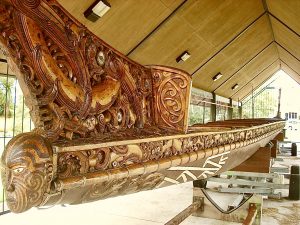
The Kiwi Encounter
I also visited the Kiwi Encounter. Kiwi is a flightless bird that can be seen nowhere else but in New Zealand. They are burrowing creatures with loose, hair loke feathers. Unfortunately this is an endangered species therefore there are Kiwi Breeding programs around the country.
On the way to Taupo
Huka (foam) Falls
On the way to Taupo we stopped at the Huka (foam) Falls situated on the Waikato River, 2km north of the lake of Taupo. The falls are 11m high, completely natural and formed by an earthquake.
Taupo
General Info
Taupo (today also known as the adventure capital of the North) was first settled in 1869 when an armed constabulary post was established during the Maori Land Wars. It is famous for its 616Km2 Lake (Lake Taupo) which is the largest crater lake in the world and said to be the scene of one of the biggest eruptions at around 186AD.
Taupo Sights
The Tongariro Alpine Crossing
The Tongariro Alpine Crossing was my highlight. This one day hike gives you the chance to see some of the most scenic and active volcanic areas of the Tongariro National Park which is the oldest national park in NZ acknowledged by UNESCO as a mixed cultural and natural World Heritage Site.
The hike starts at the Mangatepopo car park and after a nice an easy section you will arrive to the “Soda Springs”, the Devils Staircase which will take you to the South Crater is a steeper section. (This is the start point of the Mt Ngauruhoe (also known as Mount Doom in the Lord of the rings film trilogy – summit 2287m) side-track which will take around 2hours return).
The section that will take you to the Red Crater Ridge which is the last climb is flat. Going up to the Red Crater Ridge (highest point at 1886m) is not too hard even though it is steep with big drops on either side.
From here it is almost all downhill – you will pass by the beautiful Emerald Lakes which are a group of water filled explosion craters (no swimming), over the “Central Crater” to the Blue Lake which is an old vent (no swimming), the Rotopaunga valley and the Ketetahi Hut through the native forest to get back to the carpark.
This hike is around 17km long – the temperature in the Tongariro National park range from +5 to 35°C in summer and -5+10°C in winter so please bring enough cloth, a rainproof coat and over trousers.
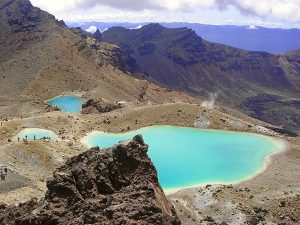

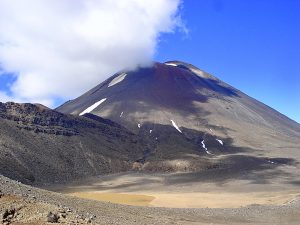
On the Way to Tatapouri
The Hinehopu´s tree
On the way to Tatapouri we stopped at the Hinehopu´s tree. The legend says, that as a baby chieftains Hinehopu was hidden under this tree by her mother. Disturbed in a journey between Rotoiti and Rotoehu the mother sheltered here. Hinehopu grew to be very fond of the forest and was deeply concerned for its trees and its creatures. It was under this matai tree that she met Pikiao and by the second they got married the tree became sacred. From this union sprang the Ngati Pikiaio tribe and subtribes. The matai tree is said to possess superhuman powers and it is the object of main respect in the Uru-uru-whenna ceremony which is said to influence the weather in favour of travellers.
Tatapouri Sights
The stingray feeding
In Tatapouri I decided to do the stingray feeding which is a walk in the water handfeeding wild stingrays. Quite an experience to see these animals so close – there was Jonah which weighted 200kg – enormous!
Whangara
Whangara is one of the most culturally and historically places on the East Coast and where the movie Whale Rider was filmed.
The story of Paikea
It is the settlement founded by Paikea who was the youngest and favourite son of the chief Uenuku (from the island of Mangaia in the present day Cook Islands).
This favouritism made Paikea´s elder brothers extremely jealous – they conspired to kill Paikea while fishing offshore and tell Uenuku he drowned. But the night before the trip Paikea feigned sleep and overheard his brothers plotting. When far out in the sea Paikea foiled their plan by deliberately sinking the canoe and drowning his brothers.
Now adrift in the ocean, Paikea clung to a canoe plank and awaited his own death. It was then that Tohora, the whale, appeared and lifted Paikea onto his great back taking him to Whangara where Paikea began a new life. Many years later one of Paikea´s sons, Tahupotiki, travelled further south and became the founder of the great South Island tribe of Ngai Tahu. It is from Tahupotiki and Paikea that the Ngai Tahu and Kati Kuri of Kaikoura claim descent.
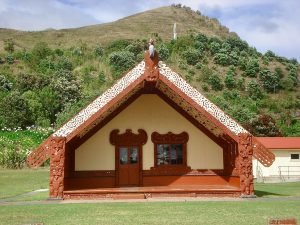
Rangitukia
Horse Riding on the beach
In Rangitukia I decided to go horse riding. Here I manage to tick one thing off my bucket list: galop along the beach. I´ve always wanted to do it and finally I managed to do it. We then rode up the hills where we had magnificent views of the beautiful Mt Hikurangi.
The Easternmost Point of NZ
The East Cape Lighthouse (the easternmost point of New Zealand) is located after the township Te Araroa which is home of the Te Waha o Rerekohu the largest and oldest of the native Pohutukawa trees (New Zealand Christmas tree) and to the north of Gisborne.
Gisborne
Gisborne was the first place in which Captain James Cook landed in Nz (October the 6th 1769). He stayed just long enough to take formal possession of the country in the name of his Majesty King George III
New Year´s Eve with a local tribe
I wanted to be among one of the first in the world to see the new Year coming and I decided to spend it with a local tribe (Te Whanau a Apanui). The homestay was very interesting and their hot tub overlooking the ocean was something I will never forget. This place used to be a whaling station till the whale numbers decreased. Farming became then the source of income. Thanks to the climate it produces some of the finest Kiwi´s. This area is also famous for hunting (in particular deer and pigs)
River Valley & the Grade 5 white rafting Explorer
My last stop before Wellington was River Valley where I choose to do a Grade 5 white rafting exploring the Rangitikei River – simply thrilling! The guides love to see you falling off and after one 5 grades rapid in which I manage to stay on board he simply threw me out of it.
Wellington
Wellington was my last stop on the North Island and the gateway to the South Island. It is located directly on a major earthquake fault line. The biggest earthquake was recorded in 1855 and measured 8 on the Richter scale. It is home of the Government and its said to be the cultural town of NZ.
Unfortunately I did have not enough time and had to leave the day after which did not give me the chance to wander around the Te Papa Museum, the Parliament Building, Mount Victoria and several other places which some other travellers told me are really worth a visit (guess this gives me a could excuse to get back to New Zealand!)
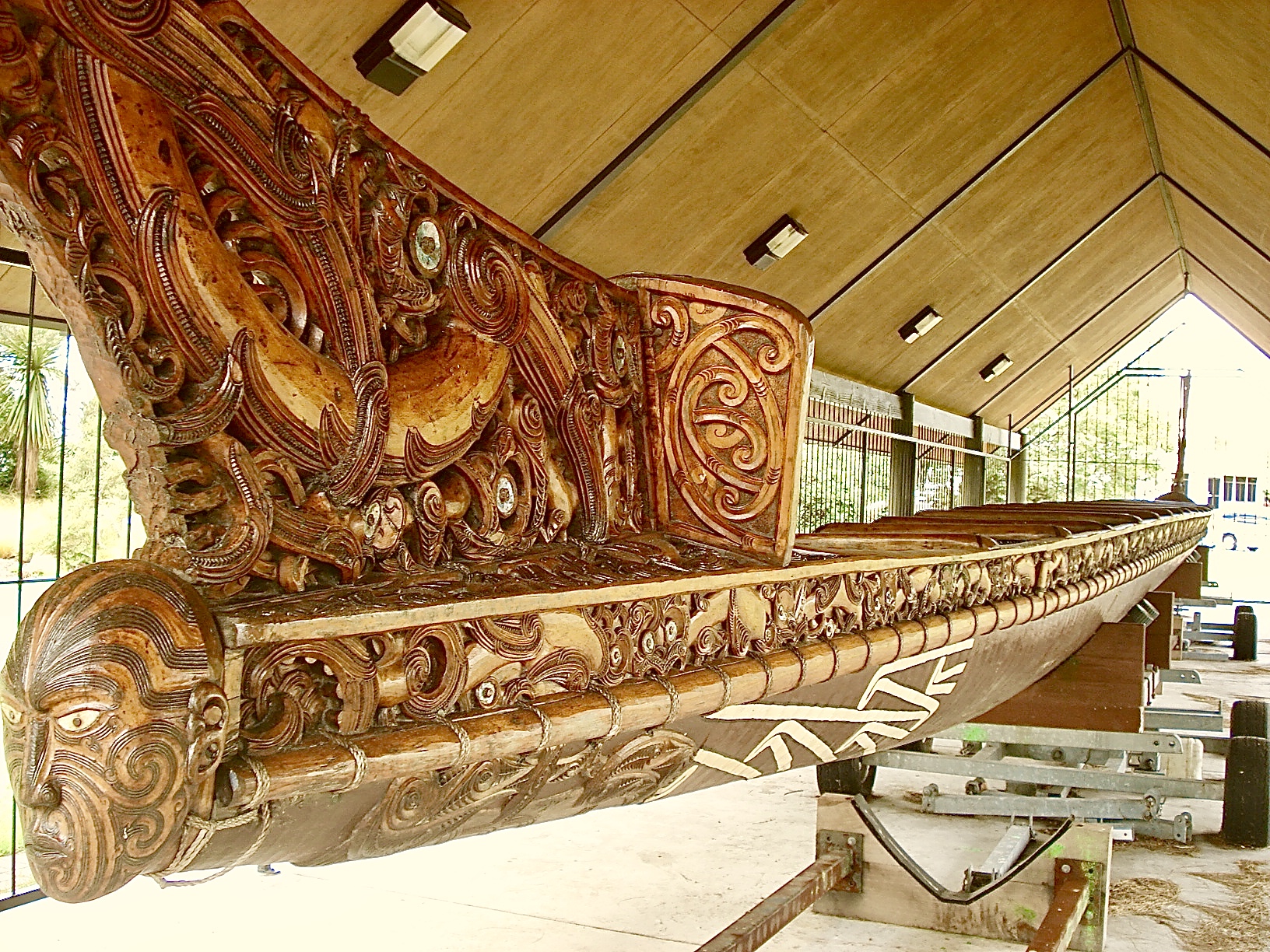
Leave a reply